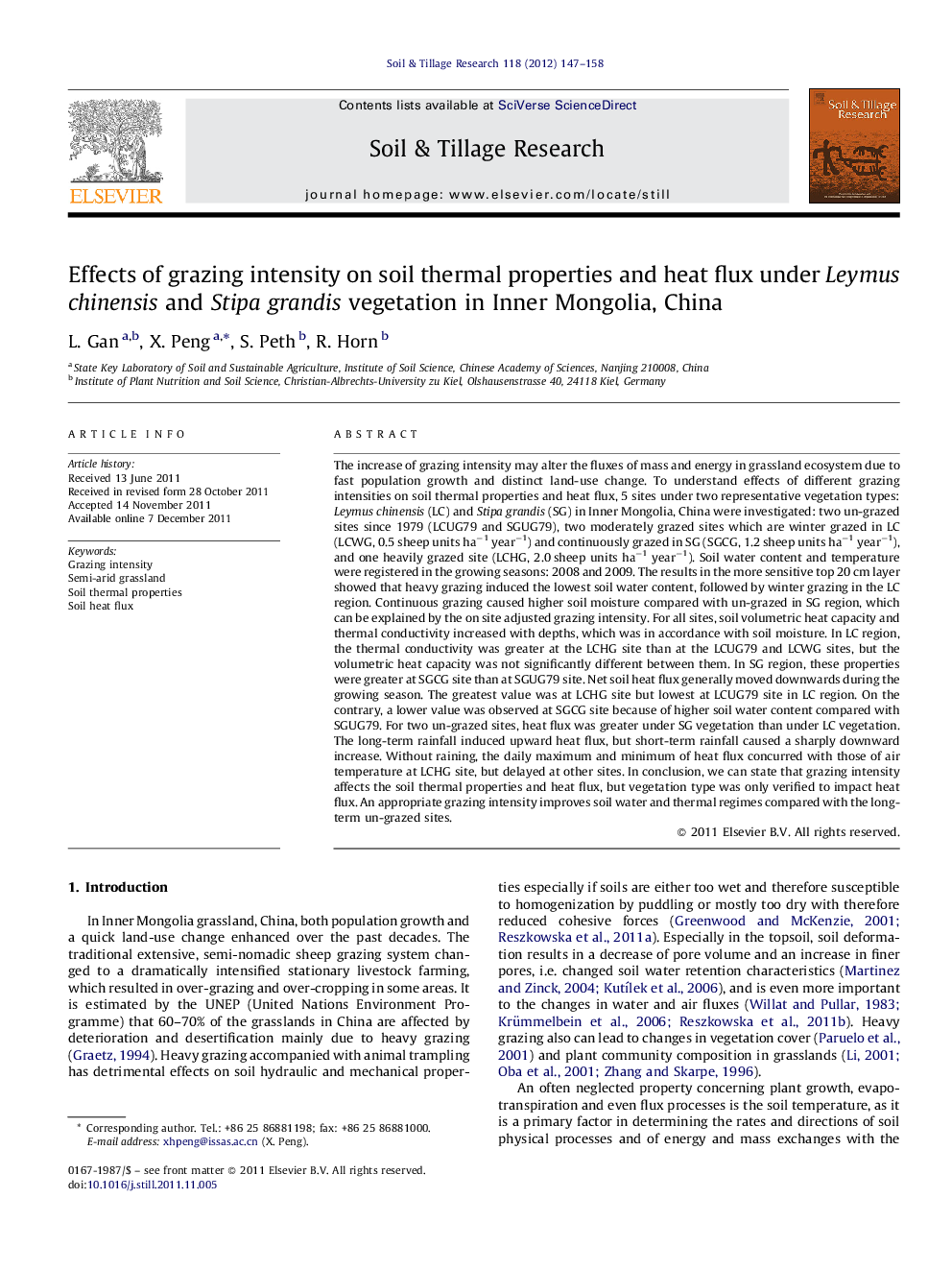| کد مقاله | کد نشریه | سال انتشار | مقاله انگلیسی | نسخه تمام متن |
|---|---|---|---|---|
| 306079 | 513070 | 2012 | 12 صفحه PDF | دانلود رایگان |

The increase of grazing intensity may alter the fluxes of mass and energy in grassland ecosystem due to fast population growth and distinct land-use change. To understand effects of different grazing intensities on soil thermal properties and heat flux, 5 sites under two representative vegetation types: Leymus chinensis (LC) and Stipa grandis (SG) in Inner Mongolia, China were investigated: two un-grazed sites since 1979 (LCUG79 and SGUG79), two moderately grazed sites which are winter grazed in LC (LCWG, 0.5 sheep units ha−1 year−1) and continuously grazed in SG (SGCG, 1.2 sheep units ha−1 year−1), and one heavily grazed site (LCHG, 2.0 sheep units ha−1 year−1). Soil water content and temperature were registered in the growing seasons: 2008 and 2009. The results in the more sensitive top 20 cm layer showed that heavy grazing induced the lowest soil water content, followed by winter grazing in the LC region. Continuous grazing caused higher soil moisture compared with un-grazed in SG region, which can be explained by the on site adjusted grazing intensity. For all sites, soil volumetric heat capacity and thermal conductivity increased with depths, which was in accordance with soil moisture. In LC region, the thermal conductivity was greater at the LCHG site than at the LCUG79 and LCWG sites, but the volumetric heat capacity was not significantly different between them. In SG region, these properties were greater at SGCG site than at SGUG79 site. Net soil heat flux generally moved downwards during the growing season. The greatest value was at LCHG site but lowest at LCUG79 site in LC region. On the contrary, a lower value was observed at SGCG site because of higher soil water content compared with SGUG79. For two un-grazed sites, heat flux was greater under SG vegetation than under LC vegetation. The long-term rainfall induced upward heat flux, but short-term rainfall caused a sharply downward increase. Without raining, the daily maximum and minimum of heat flux concurred with those of air temperature at LCHG site, but delayed at other sites. In conclusion, we can state that grazing intensity affects the soil thermal properties and heat flux, but vegetation type was only verified to impact heat flux. An appropriate grazing intensity improves soil water and thermal regimes compared with the long-term un-grazed sites.
► The pattern of change in soil thermal properties was consistent to soil moisture.
► Heavily and slightly grazed decreased soil moisture and increased soil heat flux.
► A suitable grazing intensity for land-use improved soil water and thermal regimes.
► Heat flux was higher with Stipa grandis than Leymus chinensis in un-grazed sites.
Journal: Soil and Tillage Research - Volume 118, January 2012, Pages 147–158